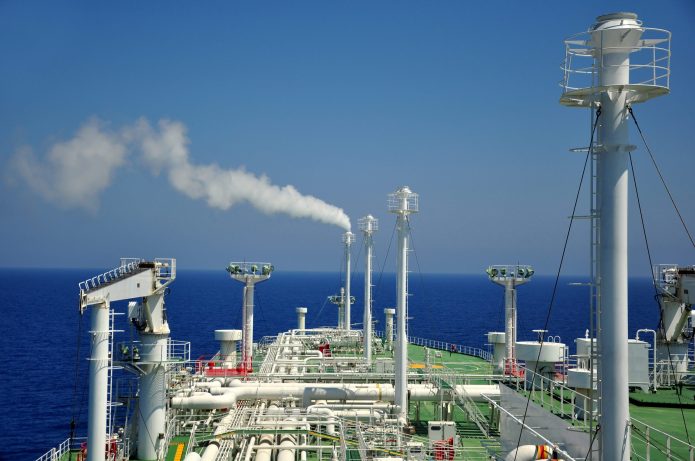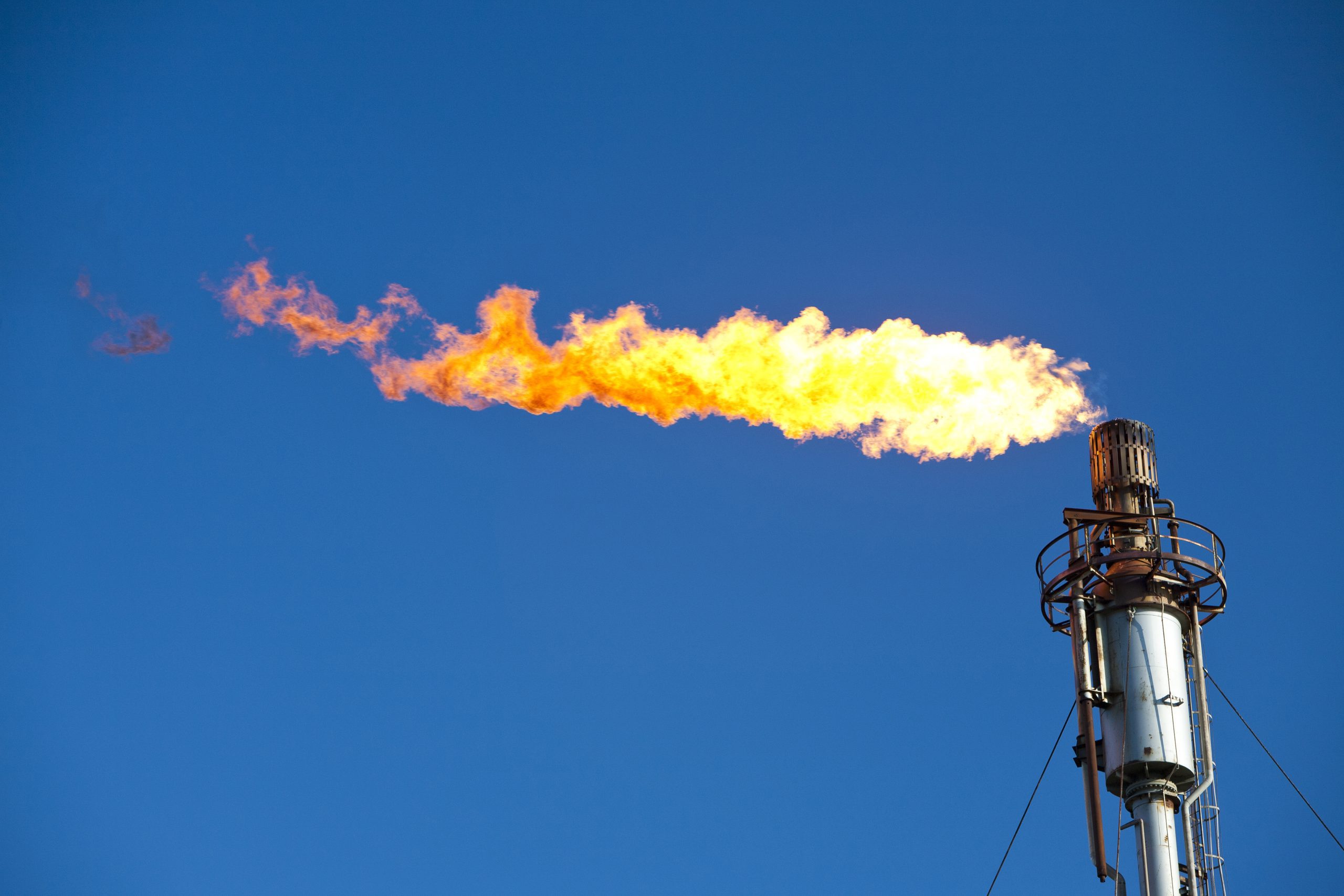How active engagement can encourage the oil & gas sector to reduce methane emissions
Olivia Gull, Governance and Responsible Investment Analyst and Ben Lofthouse, Head of Global Equity Income discuss the action that asset managers can take to reduce methane emissions by engaging with oil & gas companies.

11 minute read
Key takeaways:
- Methane emissions represent a significant financial risk for oil & gas companies as governments and regulators seek to encourage environmental accountability. From an investment perspective, carbon pricing, changing customer purchase processes, and investor pressure are also increasingly impacting the cash flows and valuations of oil and gas companies.
- Company-reported methane emission data needs to be more comprehensive – specifically, including non-operated assets (emissions associated with joint ventures and equity stakes).
- Investors need to encourage companies to provide a clearer breakdown of methane emissions in reporting, to set more focused targets, and to initiate greater industry collaboration to address practices of venting/flaring and fugitive emissions in under-resourced methane hotspots.
Why engage on methane?
Engaging on methane pollution is important for society as it has approximately 80x the warming power of carbon dioxide, and despite not being as long-lasting, it sets the pace for global warming in the near term. Increasingly, there is recognition that methane leaks from the oil and gas (O&G) sector have been underestimated and are a much greater climate risk than predicted. It is important for companies to know that investors want them to do more in this area.
From an investment perspective, there is a clear financial incentive to encourage O&G companies to reduce methane leaks, particularly when gas prices are high. In order for the O&G sector to continue to promote gas as a transition fuel and an alternative to coal with half the emissions, the associated methane emissions need to be addressed. Increasingly, the valuation of oil & gas companies are being impacted and determined by broader factors such as carbon pricing, the move towards sustainable energy and transport, as well as investor pressure to meet sustainable objectives. Active investors can engage with companies to encourage them to share best practices, to provide a clearer and fuller picture of their emissions and set more robust reduction targets that include all their assets. These efforts can help companies in the O&G sector to increase their sustainability credentials as well as ultimately enable investors to make better-informed investment decisions.
Over the past twelve months, Janus Henderson’s ESG Research & Engagement Team in collaboration with select investment teams engaged with several European O&G majors on methane emissions with a view to understand whether they were doing enough to tackle the issue. The goals were to understand the level of visibility that companies have on this issue, the steps that have been taken, as well as appreciate the barriers to achieving zero flaring and ultimately eliminating all methane emissions across their businesses.
Our engagements found that although the companies had made a lot of progress on detecting methane leaks and addressing top-emitting operations over the last five years, we were disappointed to find that non-operated assets are rarely in scope for reporting. This is important as methane emissions from joint ventures need to be accurately measured to be managed. We have subsequently been encouraging the companies to broaden the scope of methane reporting, so investors have full visibility of the exposure to pollutive assets and more importantly they are included in emission targets. In our more recent discussions with companies, we are pleased to hear that this is the direction of travel. We will continue to monitor methane reporting going forward and emission reduction progress.
Sources of methane emissions from O&G
Methane emissions can be released in different ways, with methane often a by-product of crude oil and gas extraction. Venting occurs when methane gas is directly vented (released) into the atmosphere during various points in the production of O&G. While flaring occurs when operators burn excess gas converting it into CO2 and water. This can be for safety or maintenance reasons, if it is uneconomical to use or sell, or if the infrastructure does not exist to transport and store it. Unintentional leakages, known as fugitive emissions, may also occur across all parts of O&G supply chain.
According to BloombergNEF, in 2021, venting and flaring accounted for 64% and 11% of the O&G sector’s methane emissions respectively, and the remainder came from fugitive emissions escaping from valves or improperly sealed equipment.1
Key takeaways from our engagements
1. Data is improving but methane emissions often remain underreported
Positive progress is being made within the industry in certain areas. Some examples are:
- Leak detection and repair programmes are now commonplace
- Companies are increasingly leveraging available satellite data*
- Action is being taken to address operations where more straightforward processes are required (e.g. replace gas venting, rerouting gas or designing out leaks in old facilities), and
- Companies are moving away from using carbon factor estimates for modelling emission data to using continuous monitoring technology to have more accurate real-time data on this issue.
However, there is a growing disparity between these positive actions and the increased media coverage on consistent (and in some places increasing) methane pollution from the O&G sector.
One of the key problem areas is that most companies are not including non-operated assets (joint ventures and/or equity stakes) in their data gathering, reporting or targets. This means that most company methane intensity reduction targets and zero flaring pledges only cover operated assets, so investors do not have full visibility of a company’s true exposure to methane hotspots or super emitters.
An example of this is BP’s methane exposure to Iraq’s Rumaila Oilfield, which garnered a lot of media attention due to excessive methane pollution. Last year, a BBC investigation reported that communities in Iraq living close to Rumaila oil fields where gas is openly burned were at elevated risks of leukaemia. In 2019, Iraq accounted for 9% of global methane emissions, with wasted gas estimated to be worth $1.5 billion, enough to power three million homes.2
BP provided technical assistance to the Rumaila operator and was receiving oil in lieu of cash. There has been criticism that the oil received from Rumaila was included in BP’s production figures for several years, however, the associated emissions have not been captured in reporting. This highlights the grey area around the scope of methane reporting, the reputational risk of being associated with operators who are not following best practice, and the need for collaboration across the industry to improve holistic methane reporting.
2. Industry collaboration is needed to target problem areas
The conversation on methane therefore needs to move outside the scope of reducing methane emissions from listed company operations and expand into a broader discussion around partnerships, public policy, and industry collaboration (particularly working with private and state-owned companies where there is a lack of visibility). According to the 2022 Global Gas Flaring Tracker, there are a handful of countries that are super-emitters – Russia, US, Iraq, Iran, Algeria, Nigeria, Venezuela, along with the newer additions: Mexico, Libya, and China. These countries accounted for 75% of all gas flaring and 50% of global oil production in 2021. Despite some commitments to the World Bank’s “Zero routine flaring by 2030” initiative, only the US has successfully improved flaring intensity of its oil production.
These methane hotspots should be the focus area for industry collaboration and innovative public policy. For example, one plan proposed by the European Union to help cut methane emissions from imported Algerian gas (where Algeria’s Hassi R’Mel basin is reported to be a methane hotspot) is to set up a “you collect, we buy” programme, where the bloc would purchase gas that would otherwise be intentionally released or burned off.3
In the current geopolitical climate, Russia will most likely remain a large methane emitter in the near-term with a higher likelihood of gas flaring, increased risk of becoming stranded assets** and negligent closing down of wells. Aside from Russia, there is the political and reputational risk of working with players in economically unstable countries like Libya and Venezuela. Stronger public and private collaboration is needed to address these methane hotspots and investors should encourage the sharing of knowledge to improve these operations instead of divesting assets to government or private equity owners, which potentially reduces visibility and accountability.
It is positive to see more regulatory focus on methane emissions. As part of the 2022 US Inflation Reduction Act’s (IRA) aims to boost clean energy, the Biden Administration has also targeted methane emissions from the O&G sector, providing $1.5 billion in incentives for methane monitoring and mitigation, in addition to penalties for high methane emissions.4 Government efforts and industry partnerships are vital to moving forward. At the COP26 United Nations Climate Change Conference in 2021, 100 countries pledged to cut methane emissions by 30% by 2030, the O&G Methane Partnership 2.0 reporting framework has been developed as a gold standard for reporting on methane.

3. Reduction targets may not be robust enough
Due to the lack of accurate data that is publicly available, it is difficult to analyse how O&G majors compare in terms of methane exposure, management of the issue and future reputational risk.
Most O&G companies have set methane intensity reduction targets (emissions as a percentage of natural gas that goes to market) of 0.2% in line with the O&G Climate Initiative and have joined the ‘Zero Routine Flaring’ (ZRF) initiative. BP aims for its US onshore oil & gas operations (BPX Energy) to meet this goal by 2025 with 95% sites electrified by 2023, and Shell expects to meet this goal by 2025.5 However, the ZRF commitment does not include flaring from non-operated assets.
This leads to the question of whether the ZRF targets and methane reduction targets themselves are challenging enough. Once companies have better visibility/ more operations under continuous monitoring, investors should be pushing for stronger absolute methane reduction targets, and specifically, non-operated joint venture reduction targets with greater transparency in how this is being achieved.
Taking action on methane emissions
It is important for investors to push companies to externally audit their methane emissions to reduce the risk of misreporting and to better identify problem areas which can consequently be addressed. As technology improves, emission data will become more reliable, however companies need to implement a combination of bottom-up measurement approaches (e.g. handheld infrared scanners) as well as top-down approaches (e.g. aerial measurements using aircraft or drones) to more accurately measure fugitive emissions.
Investors should ask for clarity on the data O&G companies are capturing and monitoring to confirm whether it includes all operated and non-operated assets, onshore and offshore platforms, and all transfer logistics including shipping.
Methane emissions from non-operated assets needs to be a focus area for investors as this is where the reputational risk and lack of visibility lies. There has been criticism from environmental agencies that oil majors have failed in convincing their joint venture partners to address methane emissions and have not provided the needed technical and financial resources to assist with building capacity. Capturing holistic and accurate methane data is an incredibly important first step to tackling this issue.
Janus Henderson continues to encourage further transparency and industry collaboration regarding methane emissions. We have been encouraged that many investee companies have targets in place to reduce methane emissions and in several places have already reduced emissions substantially. However, we have found some companies more advanced than others with regards to capturing emissions from joint ventures. As an active shareholder we are monitoring this progress and encourage companies to:
- Increase the level of transparency to investors regarding methane (on partnerships, progress being made on data accuracy, what is in/out of scope of methane reporting and why, and which assets are difficult to monitor etc) as this will provide investors with more comfort that action is being taken to address this issue.
- Provide a clearer breakdown of emissions disclosure for it to be useful and comparable against peers (ideally by operated versus non-operated assets; by region; by emission type – flaring vs. venting vs. fugitive emissions)
- Cast the largest possible net to include all methane emissions potentially associated with businesses, including third-party traded liquefied natural gas (LNG). The more visibility of associated methane, the more likelihood of avoiding reputational damage associated with pollutive operators.
- Initiate greater industry collaboration to address practices of venting/flaring and fugitive emissions in under-resourced methane hotspots (e.g. Iraq, Iran, Algeria, Nigeria, Libya etc.) sharing expertise and improving capacity-building to mitigate this risk before it leads to further environmental pollution and community health risks as reported in Iraq.
- Set more ambitious and specific targets around methane (e.g. create absolute reduction targets and more detailed targets focused on non-operated assets) once a more comprehensive dataset of operated and non-operated methane emissions is available.
*Methane-tracking satellites include the Environmental Defence Fund (EDF)’s MethaneSAT, which helped build the Permian Methane Analysis Project, Carbon Mapper & NASA’s EMIT project, and the UN Environmental Programme’s IMEO companies increasingly have ‘nowhere to hide’, leading to better public-private collaboration to address leaks.
**Stranded assets are assets (e.g. oil and gas resources that have not yet been extracted) that turn out to be worth less than expected as a result of changes in markets, the energy transition, etc.
1 BloombergNEF, The Oil and Gas Industry’s Methane Problem in Four Charts, 22 August 2022. Examples include Algeria, Wyoming, Kuwait and New Mexico. The 2022 IEA Global Methane Tracker report flagged that methane emissions from the energy sector were 70% higher than government-reported figures.
2 UNEP, In face of climate crisis, Iraq takes on methane pollution, 28 February 2022.
3 European Commission, EU external energy engagement in a changing world, 18 May 2022.
4 Covington, Methane Emissions Reduction Program: The Next Step in the United States’ Efforts to Tackle a Potent Greenhouse Gas, 30 July 2022.
5 BP.com, BP aims for zero routine flaring in US onshore operations by 2025; Shell.com, Inside-energy: zero-routine-flaring-by-2025.
IMPORTANT INFORMATION
Sustainable or Environmental, Social and Governance (ESG) investing considers factors beyond traditional financial analysis. This may limit available investments and cause performance and exposures to differ from, and potentially be more concentrated in certain areas than the broader market.
Energy industries can be significantly affected by fluctuations in energy prices and supply and demand of fuels, conservation, the success of exploration projects, and tax and other government regulations.
These are the views of the author at the time of publication and may differ from the views of other individuals/teams at Janus Henderson Investors. References made to individual securities do not constitute a recommendation to buy, sell or hold any security, investment strategy or market sector, and should not be assumed to be profitable. Janus Henderson Investors, its affiliated advisor, or its employees, may have a position in the securities mentioned.
Past performance does not predict future returns. The value of an investment and the income from it can fall as well as rise and you may not get back the amount originally invested.
The information in this article does not qualify as an investment recommendation.
Marketing Communication.

